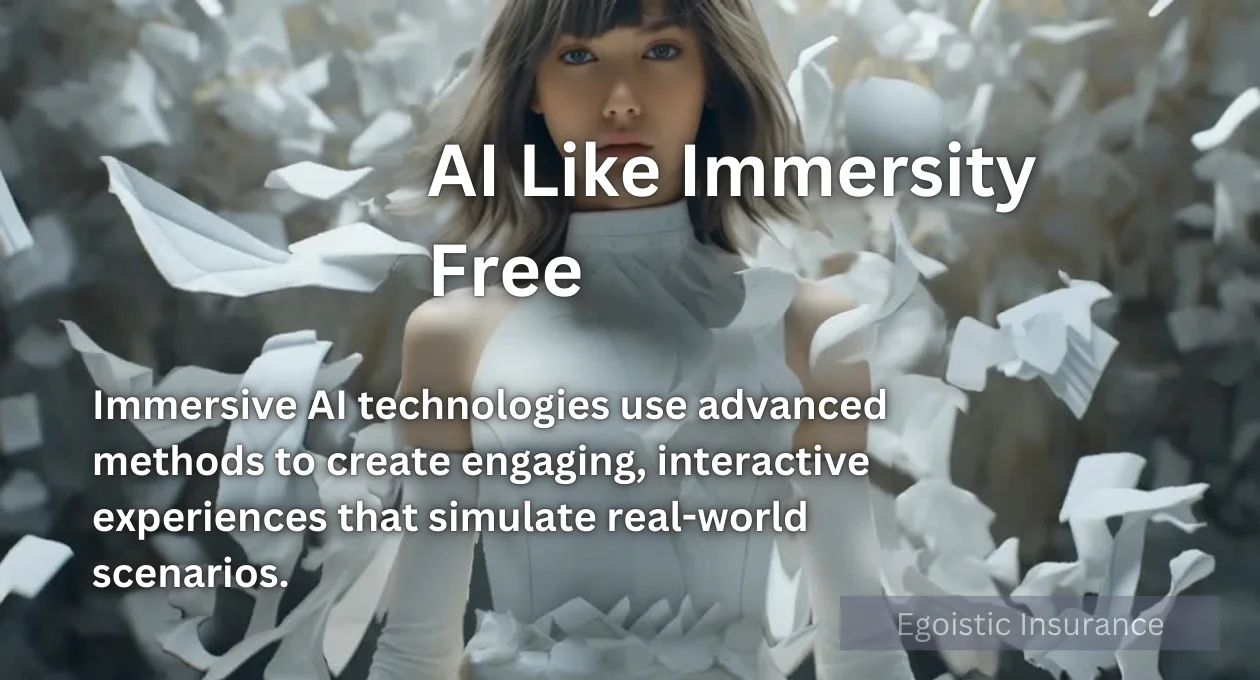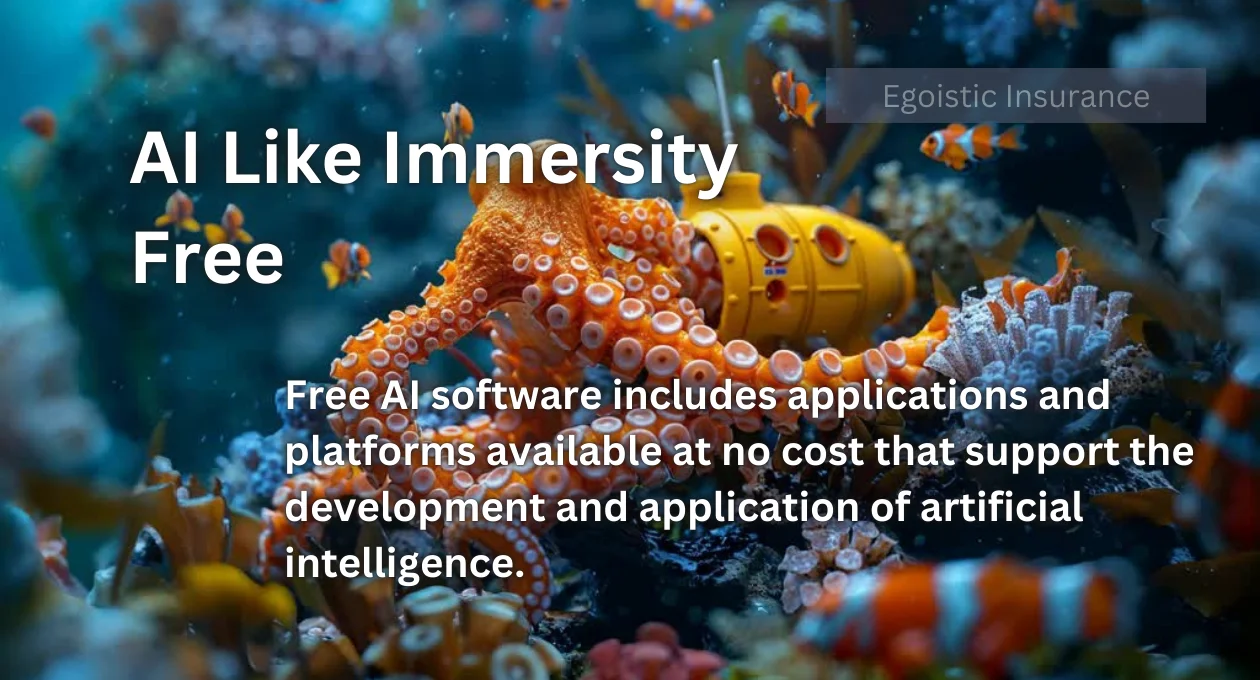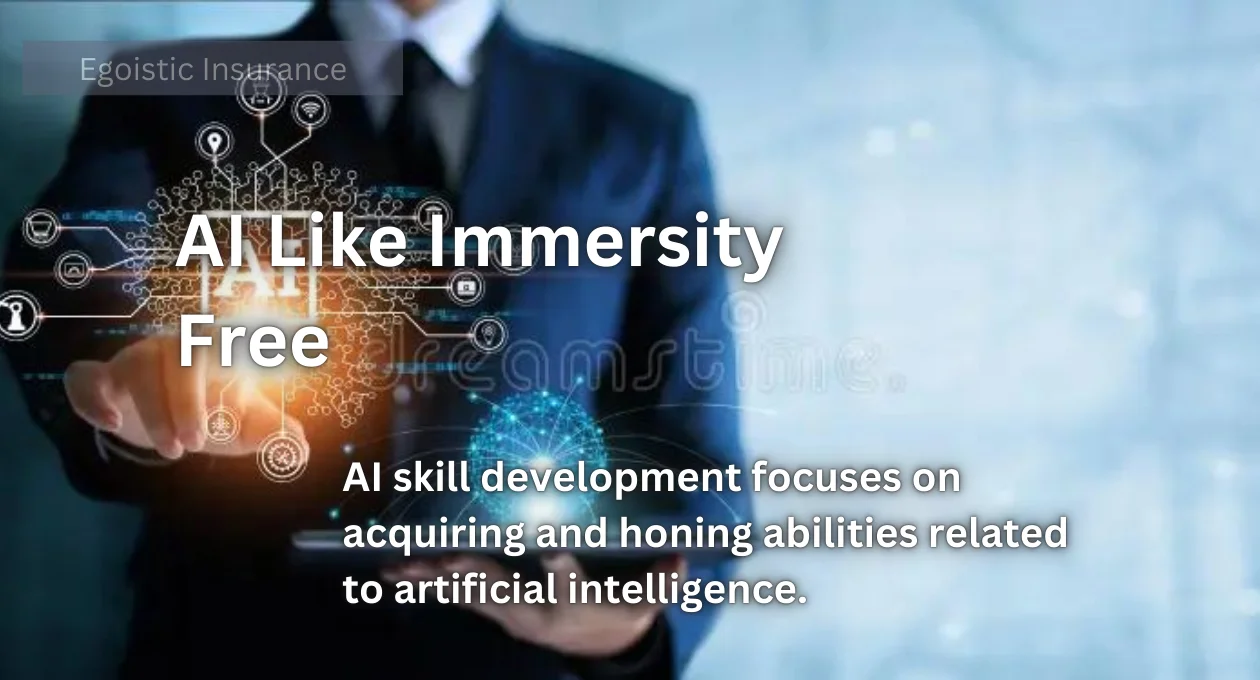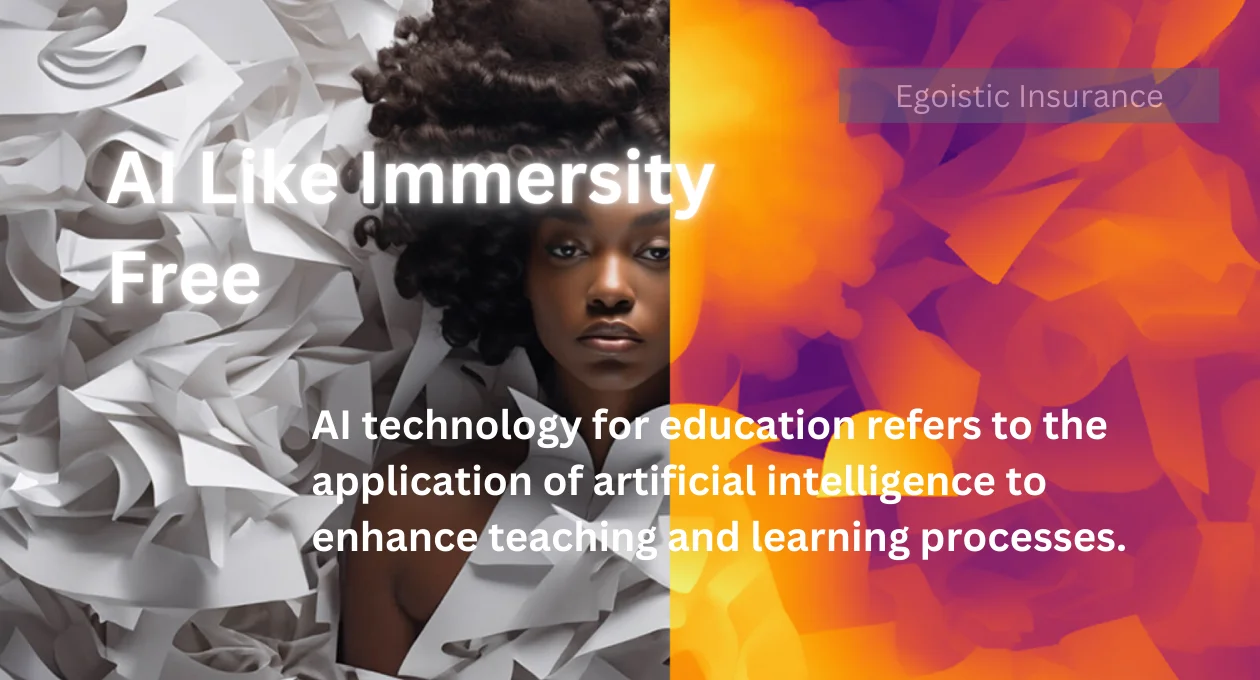In the rapidly evolving world of artificial intelligence (AI), staying ahead of the curve requires access to the latest tools, platforms, and resources. This blog delves into the landscape of AI learning and development, focusing on “AI like Immersity free”—a concept that signifies leveraging advanced, yet accessible, AI technologies to enhance learning and skill development. As technology becomes increasingly integrated into education and professional development, many individuals and institutions are seeking effective and accessible solutions.
One of the key advantages of driven learning platforms is their ability to personalize the educational experience for each user. By analyzing individual learning styles, progress, and preferences, these platforms can tailor content to meet the unique needs of learners. This customization not only enhances engagement but also improves retention and understanding of complex subjects. As a result, learners can progress at their own pace, ultimately leading to more effective skill acquisition and application in real-world scenarios.
AI Learning Platforms
learning platforms are digital environments designed to teach users about artificial intelligence and related technologies. These platforms provide structured courses, tutorials, and resources to various skill levels, from beginners to advanced practitioners. By using these platforms, learners can acquire knowledge about concepts, algorithms, and applications in a guided manner. Examples include Coursera, edX, and Udacity, which offer comprehensive courses on and machine learning.
Another significant benefit of it learning platforms is their ability to provide real-time feedback and assessment. By utilizing advanced algorithms, these platforms can evaluate learners’ progress immediately, allowing them to identify strengths and areas needing improvement. This timely feedback encourages a growth mindset, fostering a sense of accomplishment as users track their development over time. Additionally, collaborative features on these platforms enable learners to connect with peers, share insights, and engage in meaningful discussions, further enriching the learning experience.
Free Tools
Free tools are software applications that offer functionalities related to artificial intelligence without any cost. These tools can range from machine learning frameworks to data analysis applications and more. Examples of free tools include TensorFlow, PyTorch, and scikit-learn, which provide robust environments for developingmodels and algorithms without requiring a financial investment.
The integration of in education also promotes inclusivity by breaking down traditional barriers to learning. With powered tools, learners from diverse backgrounds can access high-quality educational resources tailored to their specific needs and challenges. This democratization of knowledge ensures that individuals, regardless of their location or financial circumstances, can develop essential skills for the future workforce. As a result, the potential for innovation and growth in various sectors increases, driven by a more educated and adaptable population.
Immersive AI Technologies

Immersive technologies use advanced methods to create engaging, interactive experiences that simulate real-world scenarios. These technologies often combine with virtual reality (VR) or augmented reality (AR) to offer users a deeper, more interactive learning experience. For instance, VR environments can be used to simulate complex data sets or visualizemodels in three dimensions, enhancing understanding and engagement.
As the landscape of learning continues to evolve, the role of community-driven initiatives becomes increasingly important. These initiatives encourage collaboration among learners, mentors, and industry professionals to share knowledge and experiences. By fostering an environment of support and resource sharing, individuals can gain insights from diverse perspectives, enhancing their understanding of
applications in various fields. This collaborative approach not only facilitates personal growth but also cultivates a sense of belonging within the education ecosystem.
AI Education Resources
AI education resources encompass a wide range of materials designed to educate individuals about artificial intelligence. These resources include online courses, textbooks, research papers, tutorials, and videos. They provide foundational knowledge and practical skills necessary for understanding and working with technologies. Websites like Khan Academy and MIT OpenCourseWare offer valuable educational content.
The future of learning and development is heavily reliant on the continuous evolution of technology and educational methodologies. As advancements in drive innovation, it is essential for educational institutions to adapt their curriculums to include the latest developments in the field. By integrating practical applications and case studies, learners can gain hands-on experience that bridges the gap between theory and practice.
Moreover, fostering partnerships between academia and industry will further enhance the relevance of AI education. Collaboration can lead to the creation of internship opportunities, real-world projects, and mentorship programmes that equip learners with the skills and experiences sought by employers. This synergy not only enriches the learning experience but also prepares students to meet the demands of a rapidly changing job market.
AI Training Platforms
Training platforms provide structured programs and courses specifically designed to train individuals in related skills. These platforms often include hands-on labs, interactive exercises, and real-world projects to facilitate practical learning. They cater to various levels of expertise and often include certification options. Examples include DataCamp and Codecademy.
The rise of AI technologies has not only transformed industries but also reshaped educational practices. Institutions are increasingly adopting AI-driven analytics to enhance student performance tracking and personalised learning experiences. By identifying learners’ unique needs, educators can tailor their teaching methods accordingly, fostering engagement and retention. This data-informed approach aims to create more effective and inclusive learning environments for all students.
AI for Learning
AI for learning refers to the use of artificial intelligence to enhance educational processes. It technologies can personalize learning experiences, provide instant feedback, and automate administrative tasks. Adaptive learning systems, for example, use to tailor educational content to individual students’ needs, helping them learn more efficiently and effectively.
Incorporating into the learning environment also promotes a more flexible approach to education. Learners can access resources and materials anytime, allowing for self-paced study that accommodates diverse schedules and learning styles. This flexibility enables students to take ownership of their education, leading to increased motivation and improved outcomes. Moreover, the ability to revisit lessons and track progress through it tools fosters a deeper understanding and retention of knowledge.
AI Development Tools
AI development tools are software and platforms used to build, train, and deploy artificial intelligence models and applications. These tools include integrated development environments (IDEs), code libraries, and frameworks. They facilitate the creation of it solutions by providing essential functions such as data processing, model training, and performance evaluation. Notable examples are Jupyter Notebook and Google Colab.
The integration of technologies into educational settings not only transforms how knowledge is imparted but also expands access to learning opportunities. By leveraging tools, educators can create tailored experiences that address the diverse needs of students, allowing them to thrive. Additionally, the collaboration between technology and traditional teaching methodologies paves the way for innovative approaches, ensuring a more engaging and effective learning environment. This synergy ultimately prepares learners for the complexities of a technology-driven world.
Free AI Software

Free AI software includes applications and platforms available at no cost that support the development and application of artificial intelligence. These tools may offer various features such as data analysis, machine learning model training, and natural language processing. By utilizing free software, individuals and organizations can access powerful capabilities without incurring significant expenses.
The use of free software is transforming opportunities for learning and innovation across various sectors. By reducing barriers to entry, these tools empower individuals and small businesses to experiment with technologies without the burden of high costs. This democratization of access encourages creativity and allows for the development of projects that may have otherwise been unfeasible. Furthermore, as users engage with these tools, they can build valuable skills that enhance their employability in the growing field of artificial intelligence.
Immersive AI Experiences
Immersive AI experiences leverage technologies such as VR and AR to create engaging and interactive environments where users can explore and learn about artificial intelligence in a hands-on way. These experiences often include simulations, virtual labs, and interactive tutorials that make complex concepts more accessible and understandable.
The integration of immersive experiences into education opens up exciting avenues for student engagement and understanding. By simulating real-world scenarios, learners can actively participate in the application of concepts, making theoretical knowledge much more tangible. Such environments not only enhance retention but also foster critical thinking and problem-solving skills. Ultimately, these innovative approaches can inspire the next generation of leaders by providing them with the tools and confidence to navigate an increasingly complex technological landscape.
AI Virtual Labs
AI virtual labs provide an online environment where users can experiment with tools and technologies in a controlled setting. These virtual labs often include pre-configured datasets, computational resources, and guided exercises, allowing learners to practice and apply their knowledge without needing physical hardware or extensive software installations.
AI virtual labs enhance the learning process by allowing users to engage in practical, hands-on experiences that reinforce theoretical knowledge. By simulating real-world applications of AI, learners can experiment with various tools and methodologies in a risk-free environment. These labs not only boost confidence but also encourage collaboration among peers as they explore and solve complex problems together. Ultimately,virtual labs serve as a bridge between academic learning and practical application, preparing students for future careers in technology.
AI Skill Development

AI skill development focuses on acquiring and honing abilities related to artificial intelligence. This includes learning to develop models, understanding machine learning algorithms, and applying A solutions to real-world problems. Skill development can be achieved through formal education, online courses, workshops, and practical projects.
As learners engage with technologies, fostering a growth mindset becomes essential. Embracing challenges and learning from failures can greatly enhance their ability to adapt in a rapidly evolving field. Encouraging collaboration and discussion among peers not only enriches the learning experience but also nurtures the sharing of ideas and diverse perspectives. This collaborative spirit fosters innovation and creativity, essential qualities for success in the dynamic landscape of artificial intelligence.
AI Learning Environments
AI learning environments are designed to facilitate the acquisition of knowledge and skills. These environments can be physical spaces, such as classrooms or labs, or virtual spaces, such as online platforms and interactive simulations. They provide the necessary tools, resources, and support to help learners engage with and master concepts.
The significance of continuous learning in the landscape cannot be overstated. As technology evolves, so too do the skills and knowledge required to stay relevant in the field. By fostering a culture of lifelong learning, individuals can adapt to new advancements and methodologies, ensuring they remain competitive. Moreover, engaging with diverse perspectives and experiences enriches the understanding, empowering learners to contribute more effectively to this dynamic discipline.
AI Interactive Tools
AI interactive tools are applications that allow users to interact with technologies in an engaging manner. These tools often feature user-friendly interfaces and interactive elements that enable users to explore concepts, test models, and visualize results. Examples include powered chatbots and interactive data visualizations.
The use of interactive tools is revolutionizing education and by making learning more engaging and effective. By providing users with hands-on experience, these tools enhance understanding and retention of complex concepts. Moreover, they promote a more active learning environment where students can experiment and innovate. As a result, learners are better equipped to apply their knowledge to real-world challenges and contribute to advancements in the field of artificial intelligence.
AI Technology for Education

AI technology for education refers to the application of artificial intelligence to enhance teaching and learning processes. This includes using to create personalized learning experiences, automate grading, provide intelligent tutoring, and support educational research. Technology aims to make education more effective, accessible, and engaging.
The integration of technology into educational settings also facilitates the identification of individual learning patterns and preferences. By analysing student interactions and performance data, systems can tailor content and resources to better suit each learner’s needs. This personalised approach not only enhances the learning experience but also helps educators target areas that may require additional support. As a result, students are empowered to take charge of their learning journey and achieve their full potential.
FAQs
What are AI virtual labs?
Virtual labs are online platforms that provide users with the opportunity to experiment with AI tools and technologies safely and in a controlled environment. They include pre-configured datasets and resources that allow learners to apply their knowledge without the need for extensive hardware or software installations.
How can AI skill development benefit learners?
The skill development enhances learners’ capabilities in creating models, understanding machine learning algorithms, and applying solutions to practical problems. This development is crucial for adapting to the rapidly changing landscape of technology and can significantly improve career prospects in the field.
What is a collaborative learning environment?
A collaborative learning environment encourages individuals to work together, share ideas, and learn from one another. In the context of education, this environment fosters innovation and creativity, allowing learners to explore complex problems collectively and develop effective solutions.
Why is continuous learning important in AI?
Continuous learning is vital in the field as technology is constantly evolving. Staying updated with new advancements, skills, and methodologies ensures that learners competitive and can effectively contribute to their respective areas of expertise.
How do AI interactive tools improve education?
Interactive tools make learning more engaging by giving users hands-on experiences that reinforce understanding of complex concepts. They promote active participation, enabling students to experiment and innovate while applying their knowledge to real-world challenges.
Conclusion
In today’s rapidly evolving technological landscape, the integration of artificial intelligence into education represents a transformative opportunity for learners and educators alike. By embracing interactive tools, personalized learning experiences, and collaborative environments, educational institutions can foster an engaging and effective learning experience that empowers students to thrive in the field of it. Continuous learning and skill development remain essential, allowing individuals to adapt to advancements and contribute meaningfully to this dynamic discipline. As we move forward, the commitment to nurturing innovative mindsets and fostering a culture of lifelong learning will be crucial in shaping the future of education and ensuring that learners are well-equipped to tackle the challenges that lie ahead.
In conclusion, the concept of “AI like Immersity free” reflects the growing availability of advanced technologies and resources that are accessible to a wide audience. By leveraging learning platforms, free tools, and immersive technologies, individuals can enhance their knowledge and skills in artificial intelligence, opening up new opportunities for personal and professional growth.
For more interesting information keep visiting egoisticinsurance.online


